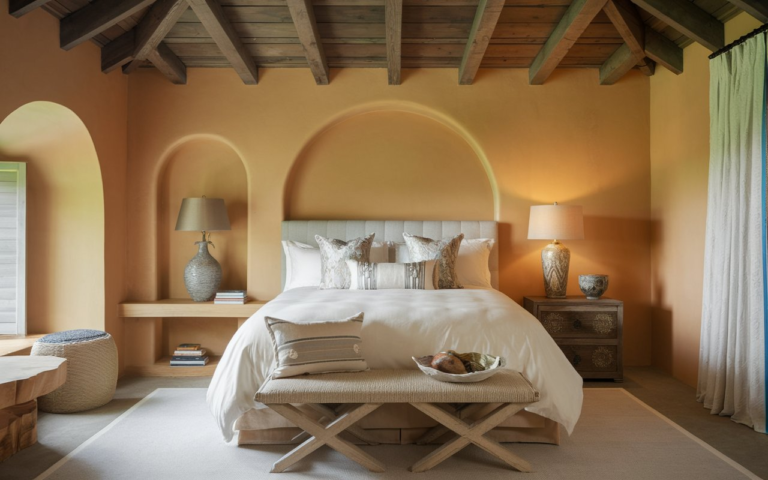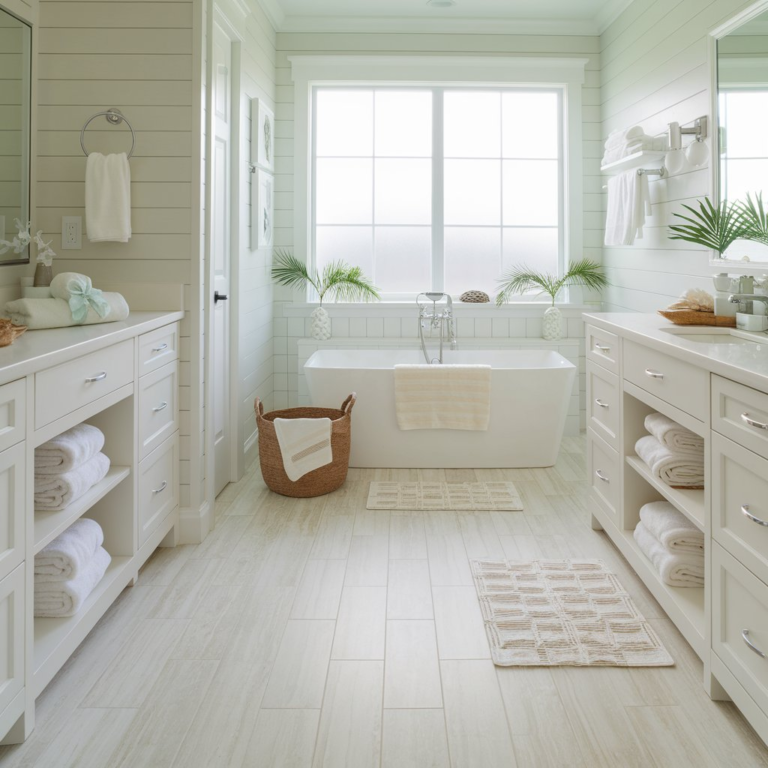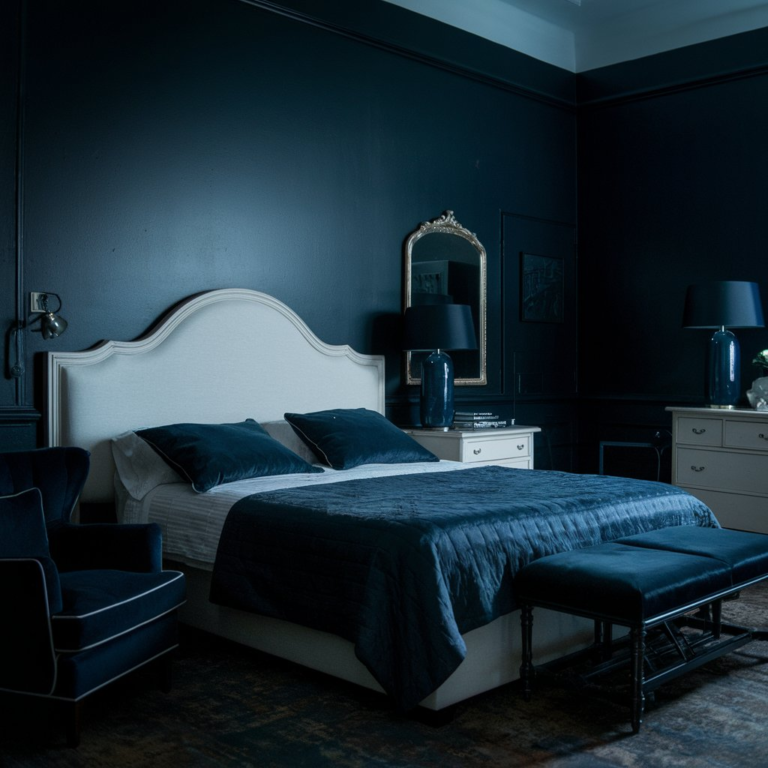28 Ideal Home Office Workspace Ideas: How to Organize
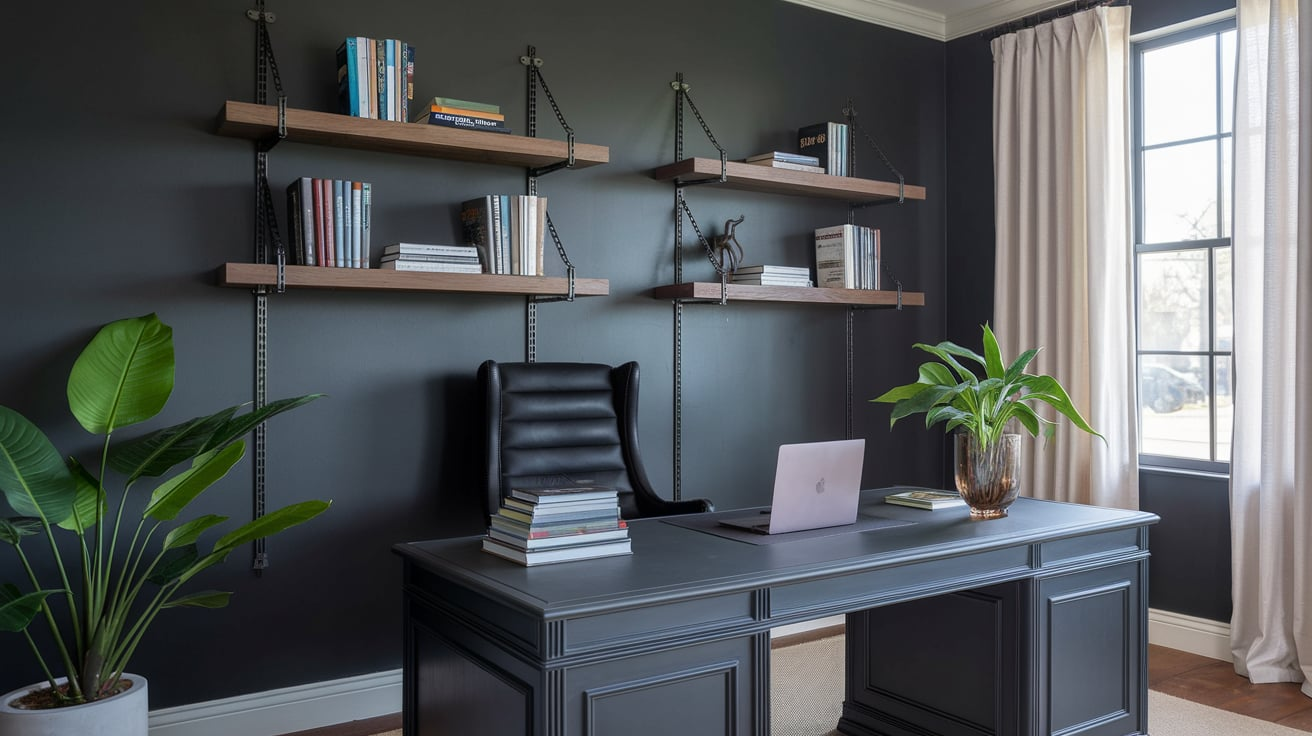
If you’re reading this, chances are you’ve joined the growing number of people working from home, and you’re looking to elevate your workspace.
You’re not alone—whether it’s a new project or the ongoing quest for an ergonomic desk setup, we all know how much of a difference a thoughtfully designed workspace can make.
But how do you balance functionality with style? How do you transform a corner of your home into an office that’s both efficient and visually pleasing?
1. Maximize Your Natural Light

Let’s start with the basics. Light is crucial for productivity. We all know the difference between a well-lit room and one where you’re squinting at your screen, desperate for a break. Position your desk near windows to take full advantage of natural light. In my experience, adding a large window next to my desk boosted my mood and productivity tenfold. If direct sunlight is too harsh, consider sheer curtains to diffuse the light without blocking it out.
2. Create Zones for Different Tasks

Your home office isn’t just a one-dimensional space. Think of it as a mini studio where different tasks happen in different areas. Have a designated area for computer work and another for brainstorming or writing. You can use a combination of different desks, chairs, or simply different corners of your room to clearly define workstations. This approach helps to mentally separate tasks, making it easier to shift focus as needed.
3. Ergonomic Furniture for Comfort and Health
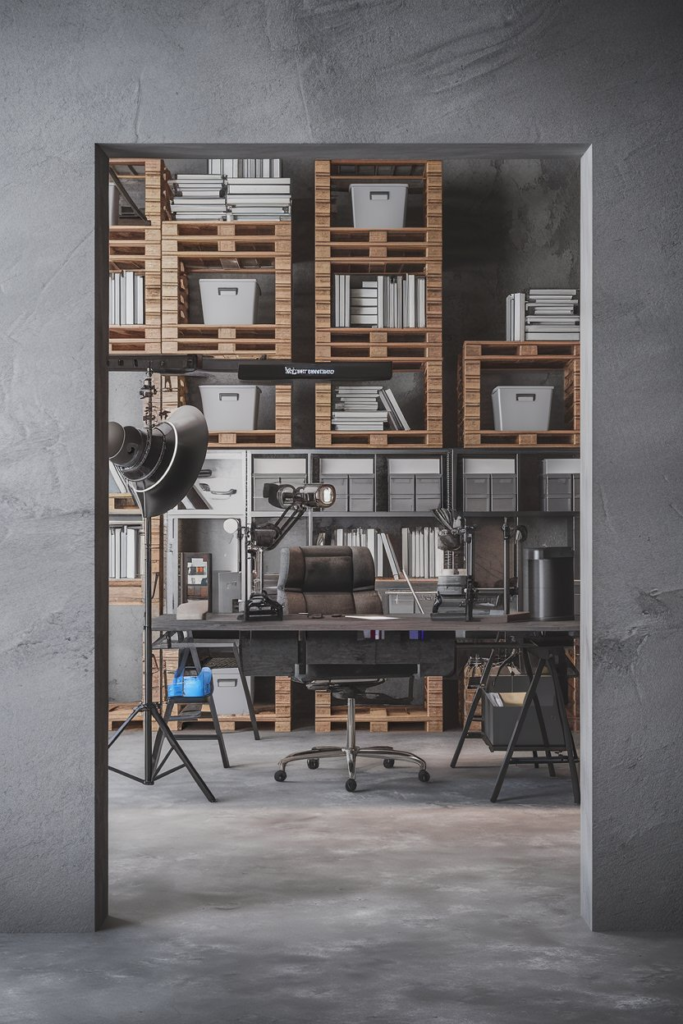
Comfort isn’t optional when it comes to home office furniture. Ergonomic chairs that support your posture will keep you comfortable during long work hours. I learned this the hard way when I used a cheap office chair for months and experienced constant back pain. After investing in an ergonomic chair, I immediately felt the difference. Also, consider an adjustable desk that lets you switch between sitting and standing. It’s a small change that has big health benefits, especially when you’re sitting for hours at a time.
4. Smart Storage Solutions
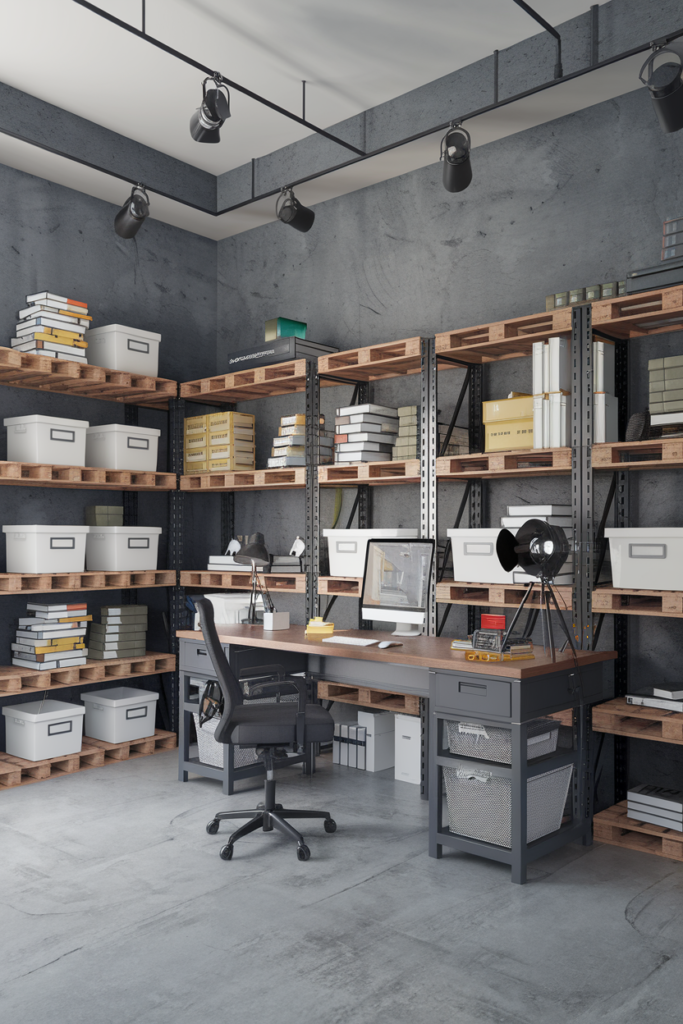
One of the most crucial aspects of a productive workspace is organization. Clutter can severely hinder focus and creativity. Use smart storage solutions like floating shelves, filing cabinets, and desk organizers to keep your workspace tidy. I use drawer dividers to separate cables, pens, and paperclips. It’s a small but effective way to make sure everything has a place. Think of storage as the unsung hero of productivity—without it, you’ll spend more time searching for things than actually working.
5. Go Vertical with Shelving
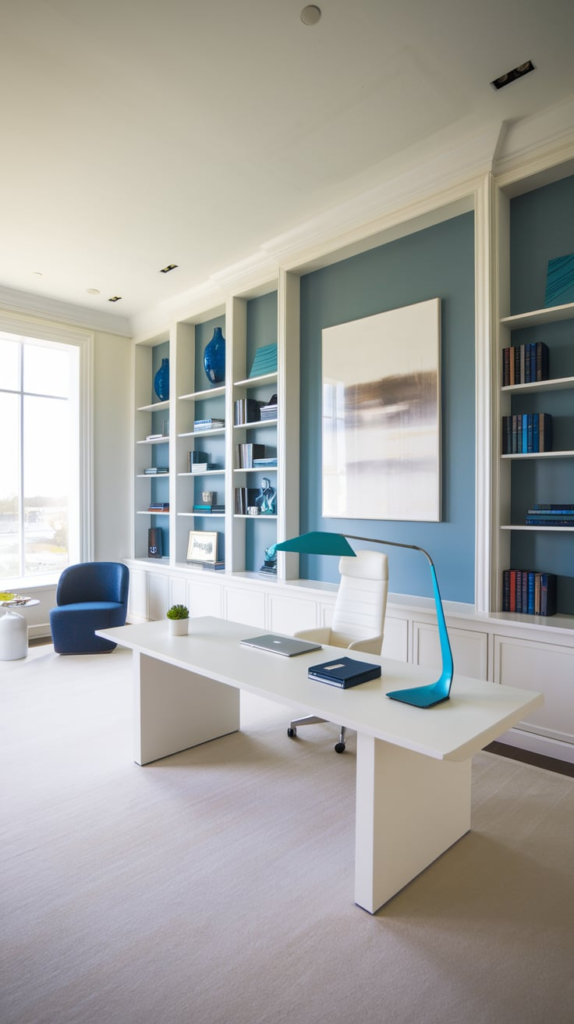
When floor space is limited, going vertical with shelving is a game-changer. Mount shelves above your desk to store books, decor, or office supplies. This can also clear up valuable desk space for what truly matters. My own office transformed when I added a vertical bookshelf above my desk—suddenly, I had more room to breathe and think.
6. Design a Minimalist Workspace

Minimalism is often synonymous with productivity. A clutter-free, streamlined workspace helps maintain focus and clarity. This doesn’t mean stripping your office down to the bare essentials but rather prioritizing functionality and simplicity. Think about limiting the number of items on your desk to only what you truly need: a laptop, pen holder, notepad, and maybe a personal plant or framed photo. Less stuff = less distraction.
7. Add Personality with Art and Decor
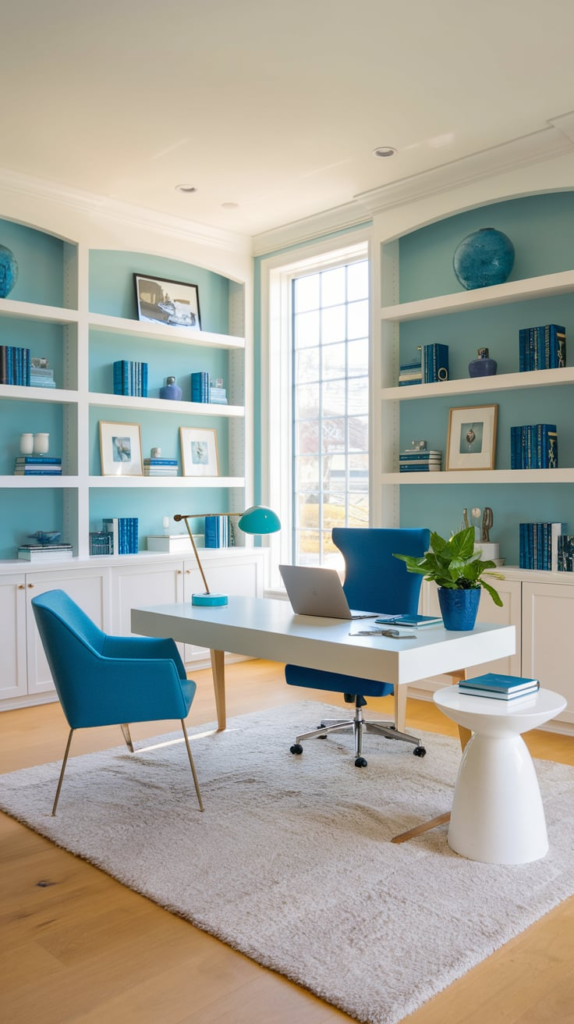
A modern home office doesn’t have to be all work and no play. Personalize your space with art, inspirational quotes, or decor that speaks to your personality. One of my favorite things to do is hang up pieces of art that motivate me—whether it’s a piece of abstract art or a vintage poster from my travels. It adds life to the room and helps inspire creativity.
8. Use Color Psychology
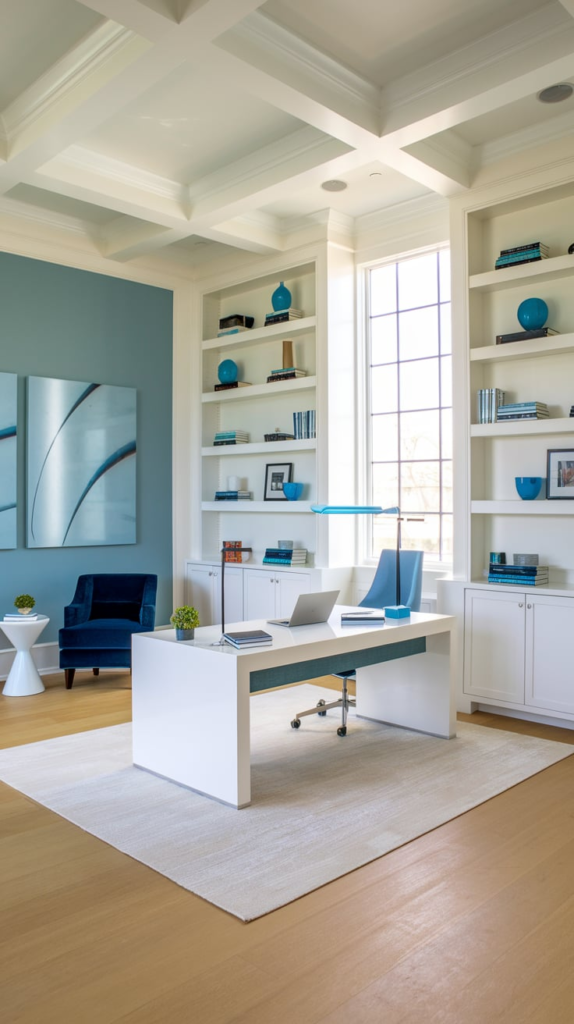
Did you know that colors can affect your mood and productivity? For example, blue tones can promote calmness and focus, while green is associated with creativity and balance. When choosing paint colors or accents for your home office, consider the effect each color might have on your work. I’ve found that a muted blue wall behind my desk keeps me feeling calm during stressful projects.
9. Implement a Cable Management System
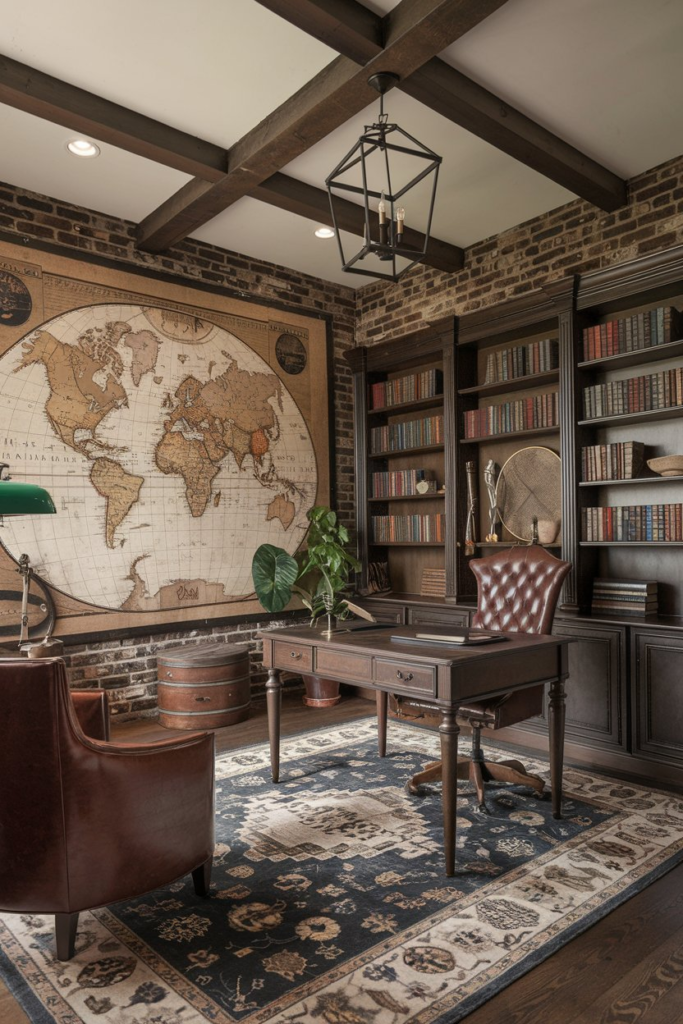
Wires and cables are the silent enemies of a clean workspace. To avoid tangled chaos, implement a cable management system. Use cable clips, sleeves, or a cable tray to keep everything neat and organized. When I first set up my office, I used cheap cable ties, but once I upgraded to a more professional cable management system, everything looked much cleaner, and I could find the right charger without pulling half the cables off my desk.
10. Create a Comfortable Seating Area
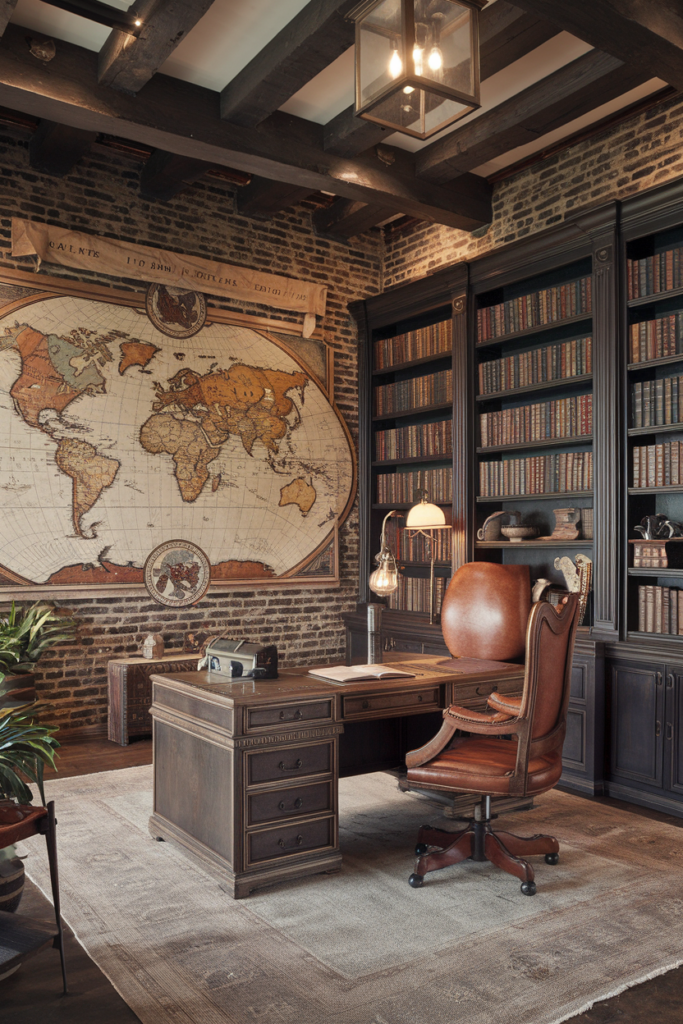
Not all work in a home office happens at the desk. It’s important to have a comfortable seating area for meetings, brainstorming, or just taking a break. A small armchair or a comfy couch can make a world of difference when you need to shift your perspective. I’ve spent hours in a cozy chair reading emails or drafting ideas, and it’s a great way to break up the monotony of sitting at a desk.
11. Stay Organized with a Whiteboard or Bulletin Board
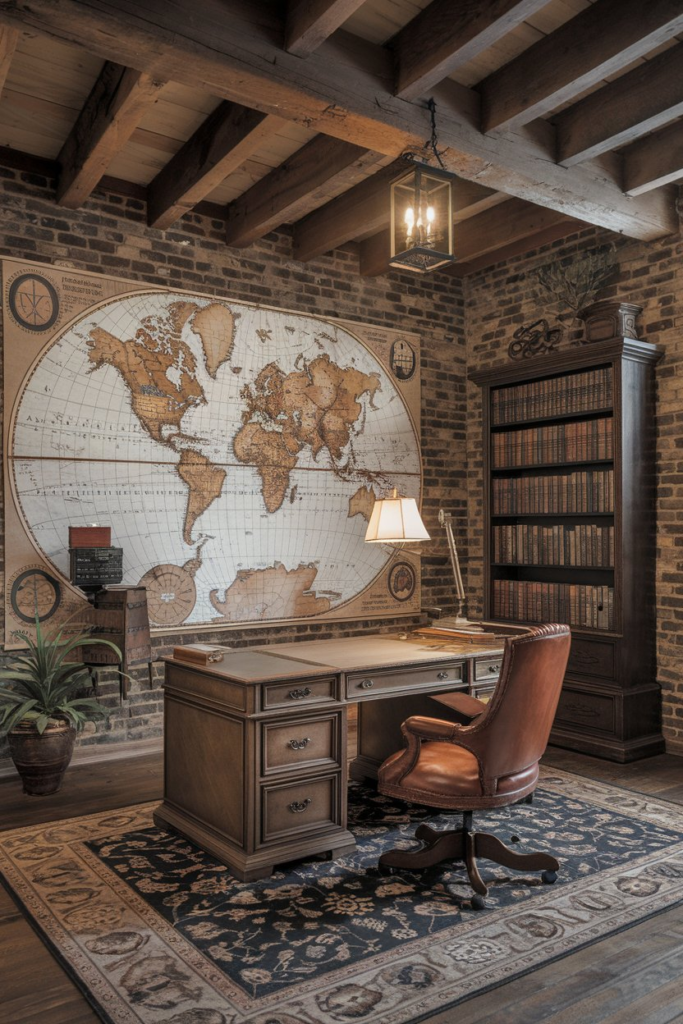
A whiteboard or bulletin board on the wall is an ideal place to jot down important dates, deadlines, or reminders. I use a whiteboard to map out project timelines, keeping me on track and visually organized. It’s a simple yet effective way to stay on top of your tasks without being overwhelmed by post-its everywhere.
12. Go Green with Indoor Plants

Incorporating plants into your home office doesn’t just make the space look more vibrant—it can actually boost productivity. Studies show that having plants around can lower stress and improve focus. I personally swear by my snake plant; it’s easy to take care of and adds a refreshing pop of green to my otherwise neutral workspace. Choose low-maintenance plants like succulents, pothos, or peace lilies to bring life into your office.
13. Invest in Proper Lighting
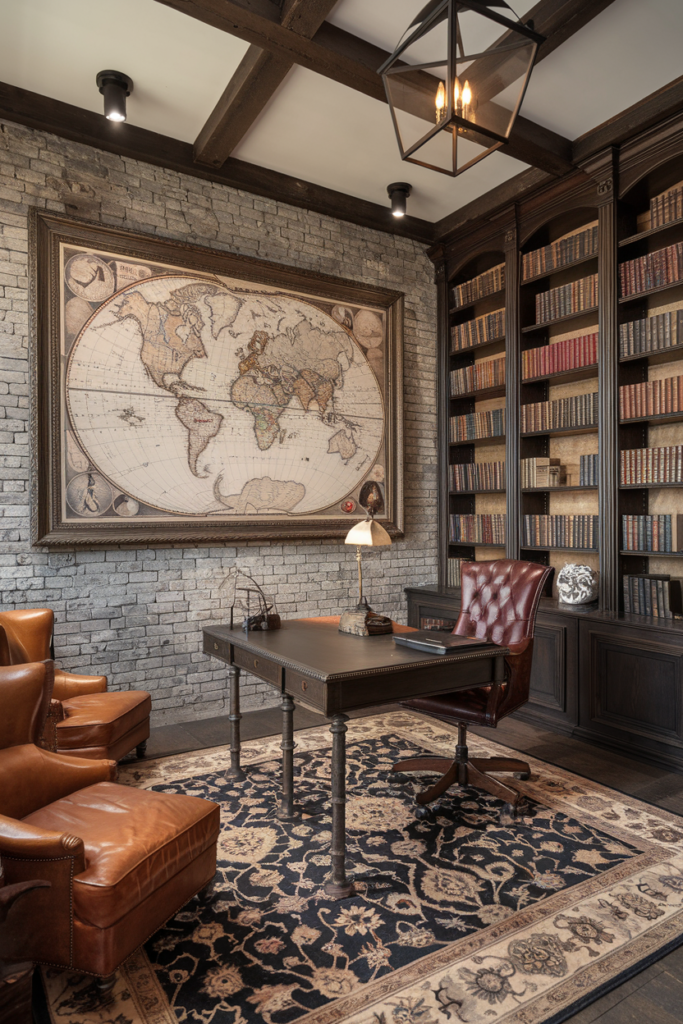
Lighting is one of the most important aspects of a home office. Task lighting is essential for preventing eye strain, and ambient lighting can set the right mood for creativity and focus. I’ve experimented with a variety of desk lamps, but my favorite is a lamp with adjustable brightness—perfect for working late into the night. Also, consider installing overhead lighting with a dimmer switch so you can adjust the mood depending on the time of day.
14. Design an Inspirational Workspace
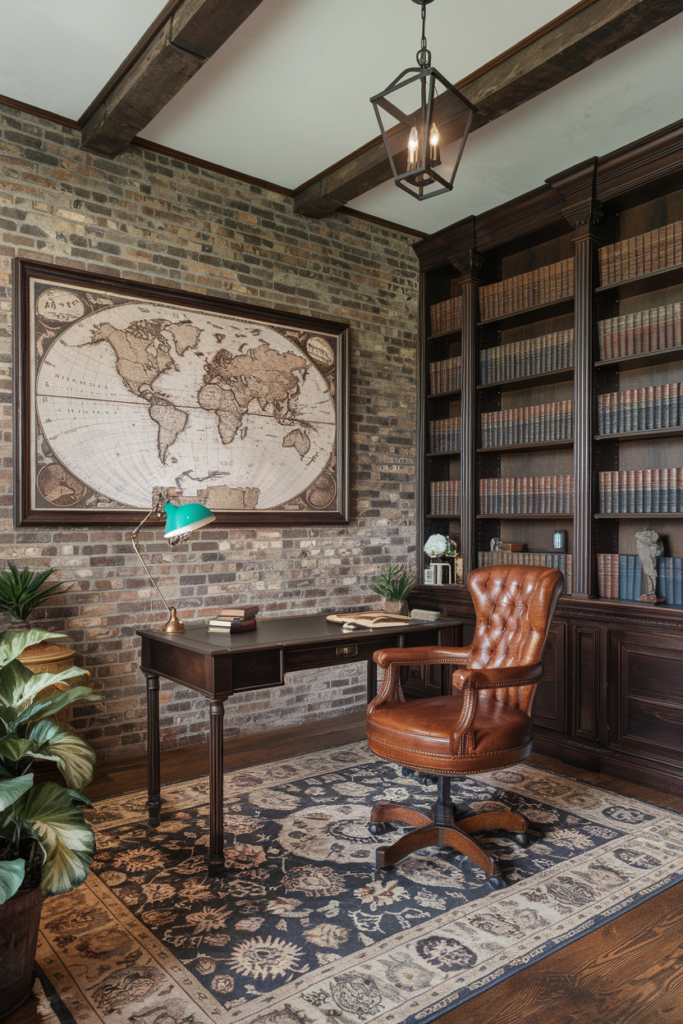
Your workspace should be a place that motivates you. Incorporate inspirational elements such as motivational posters, vision boards, or an array of books that encourage creativity. For example, I have a framed quote on my wall that says, “Success is the sum of small efforts,” and it gives me the push I need when things get tough.
15. Use Multi-Functional Furniture
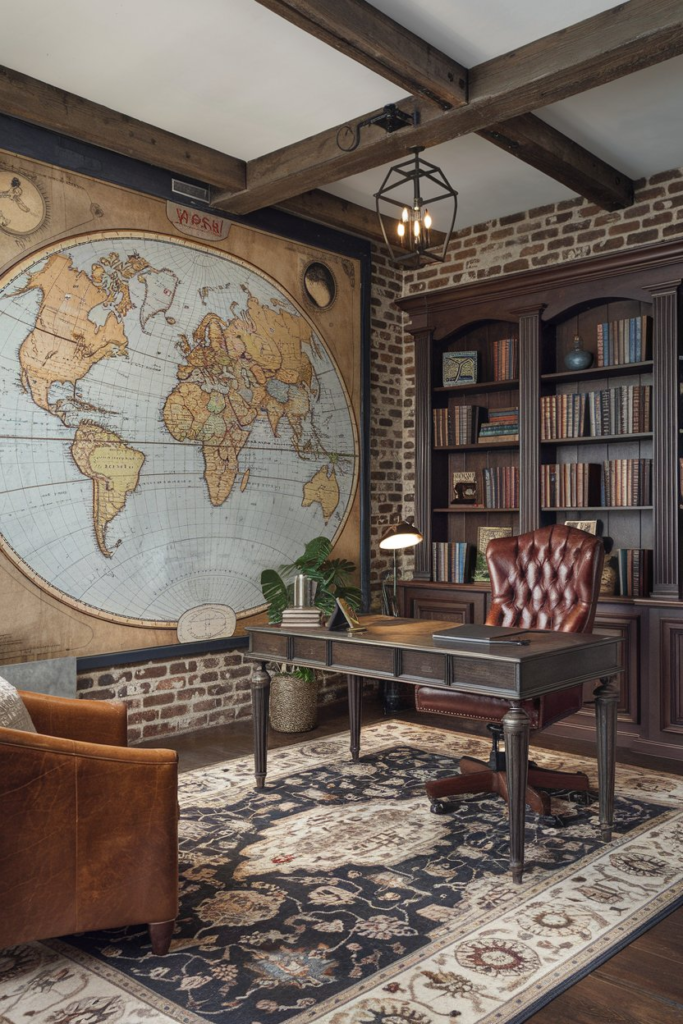
When space is at a premium, multi-functional furniture is key. Look for desks with built-in storage or chairs that double as filing cabinets. Multi-functional pieces keep things sleek and save space, especially if you’re working with a small room. My desk is actually a table that I converted into an office space by adding storage under it. It’s the perfect combination of form and function.
16. Create a Quiet Corner for Focused Work
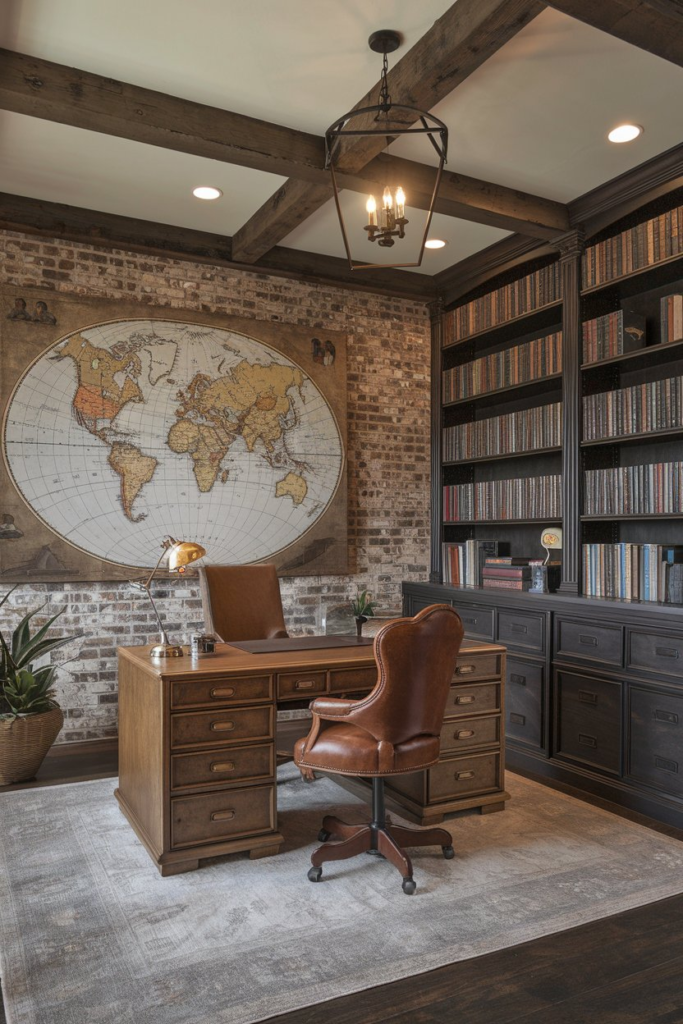
Sometimes you need a space that’s free from distractions. If possible, designate a quiet corner in your home for deep work. This could be in a corner of your room, a nook, or even a converted closet. I’ve found that having a distraction-free zone makes it easier to get in the “zone” when I need to focus on high-priority tasks.
17. Make Use of Empty Walls
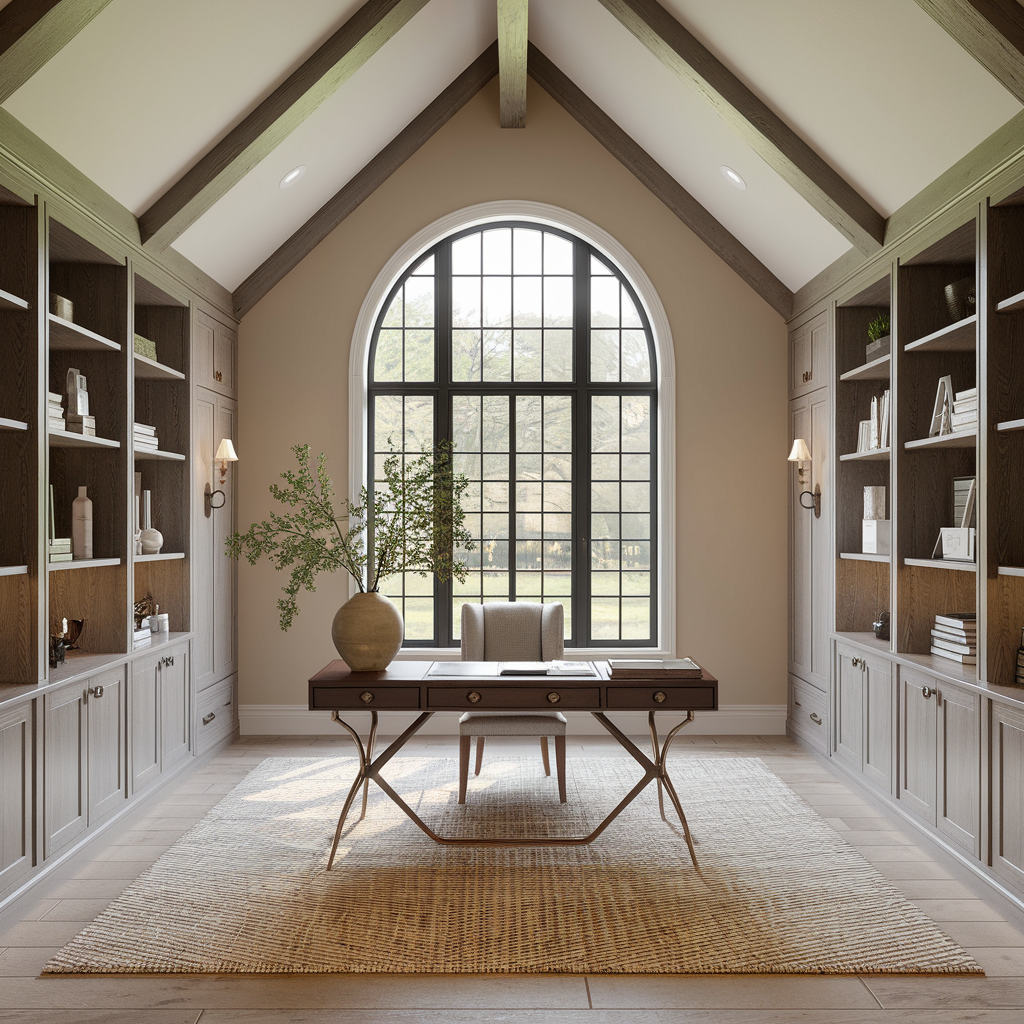
Empty walls are like blank canvases waiting to be filled with potential. Install shelves, hang framed artwork, or add some personal touches to create a warm, welcoming atmosphere. In my own office, I hung a floating shelf with plants and small trinkets—something as simple as that made the room feel like home.
18. Design a Custom Built-In Desk
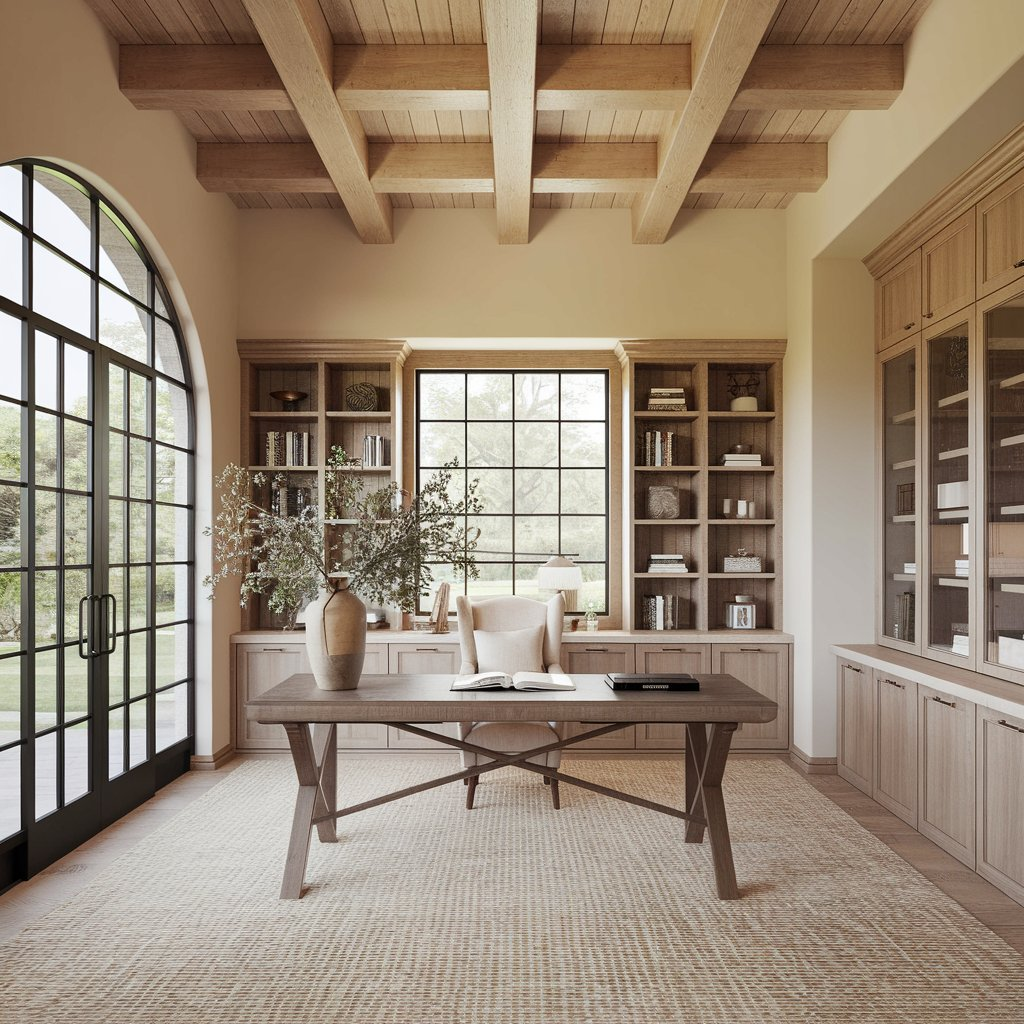
For those who need a truly custom solution, designing a built-in desk is the way to go. This works especially well if you’re creating a home office in a small space or want something tailored specifically to your needs. A built-in desk can integrate storage, cable management, and even space for your printer—all in a sleek, space-efficient design.
19. Get Inspired by Your Surroundings
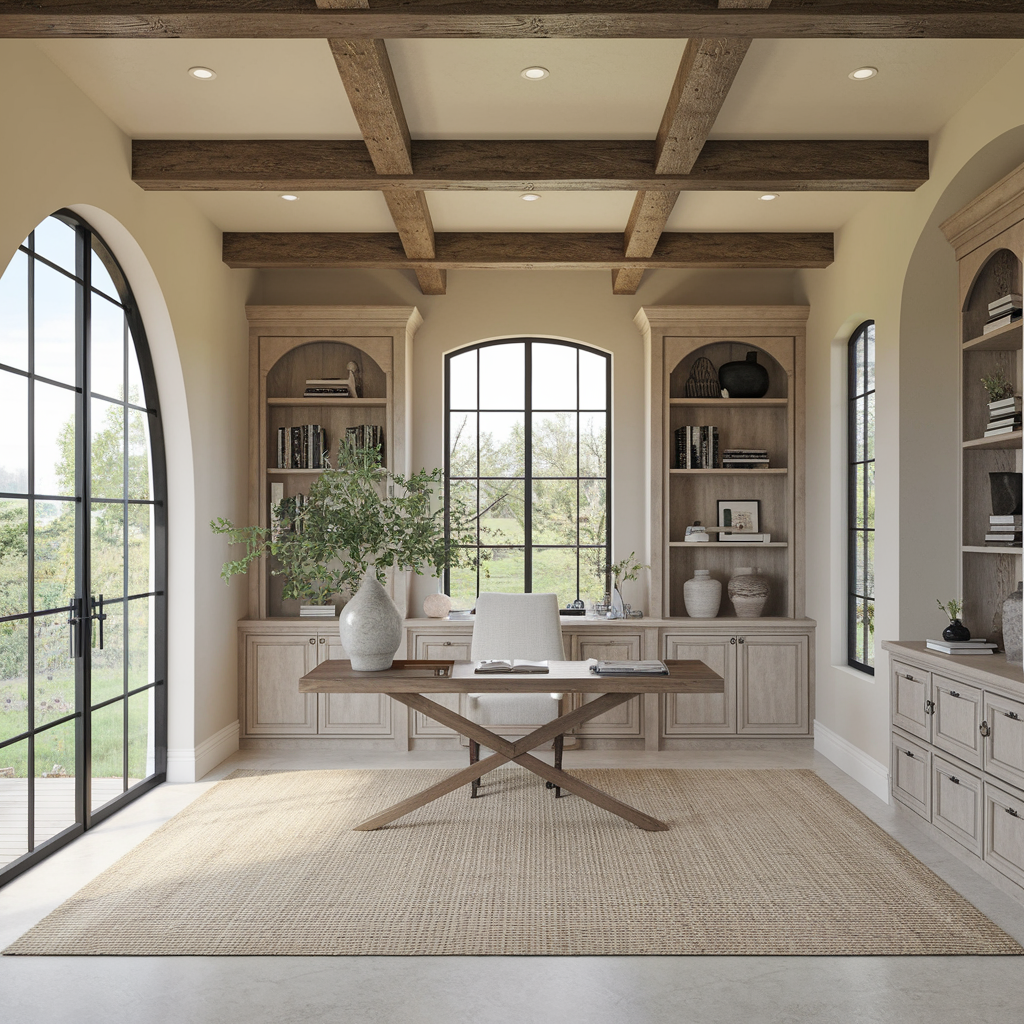
Sometimes, the best ideas come from the space around you. Draw inspiration from your home’s architecture or surroundings. Whether it’s a minimalist design, a touch of industrial decor, or even mid-century modern touches, allow the vibe of your space to guide your home office design. I once renovated a small room by using materials and colors from other parts of the house to create a cohesive and calming workspace.
20. Incorporate Reflective Surfaces

Reflective surfaces, such as glass or glossy metal, help brighten up the space by bouncing light around. A glass desk, shiny metal fixtures, or even a mirrored desk organizer can help keep your office feeling fresh and open. I found that swapping out a dark wood desk for a sleek glass top immediately made the space feel brighter and more expansive.
21. Install a Standing Desk Converter
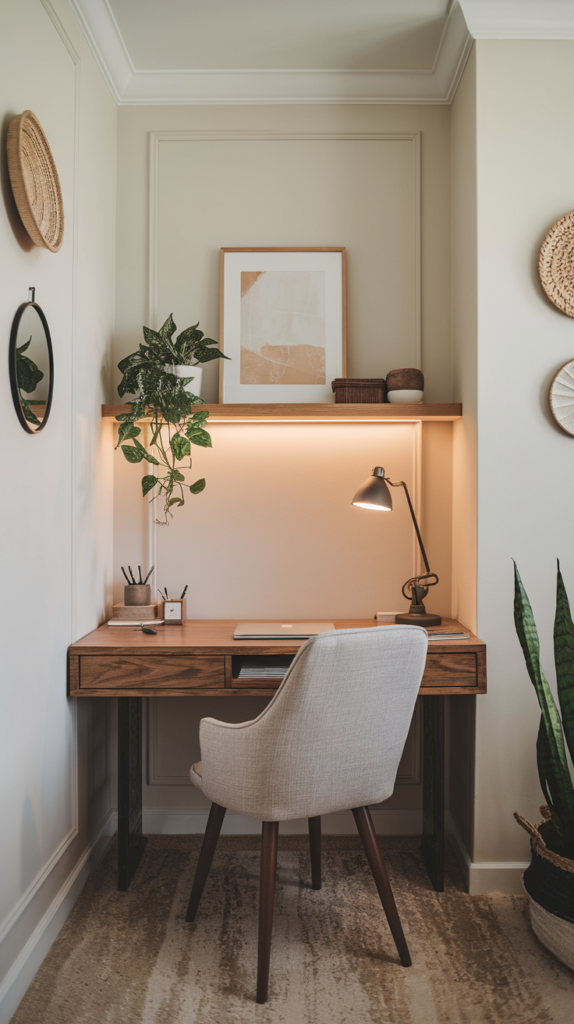
If you don’t want to invest in a full standing desk, consider a standing desk converter. These adjustable platforms sit on top of your desk and allow you to alternate between sitting and standing, which helps with posture and energy. It’s a small investment that can make a big difference in your work habits.
22. Use Wall-mounted Desks
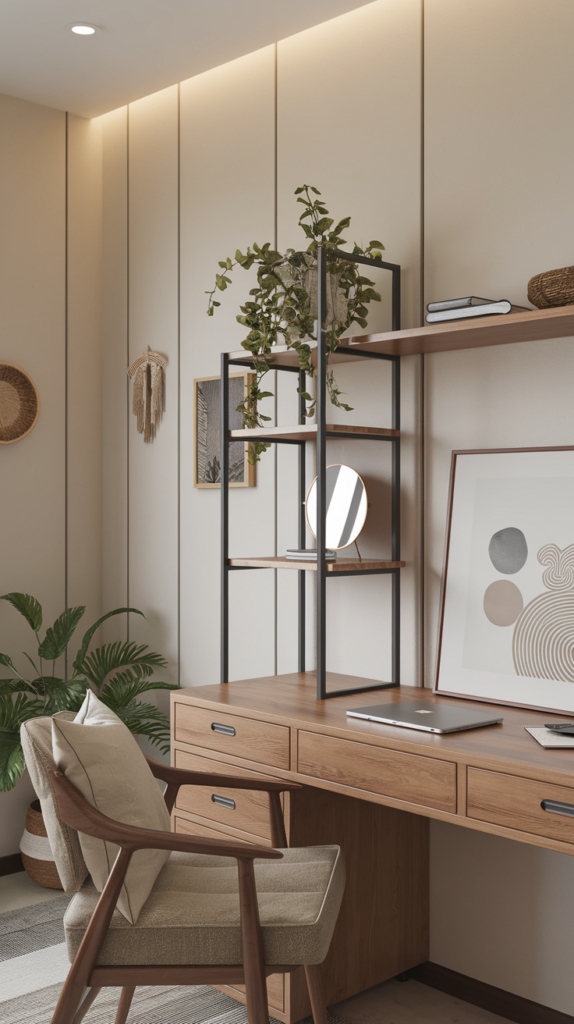
For smaller spaces, a wall-mounted desk can be a game-changer. These desks attach directly to the wall and fold up when not in use, giving you back precious floor space. If you need a work nook in your kitchen or living room, a wall-mounted desk might be exactly what you need.
23. Incorporate a Statement Chair
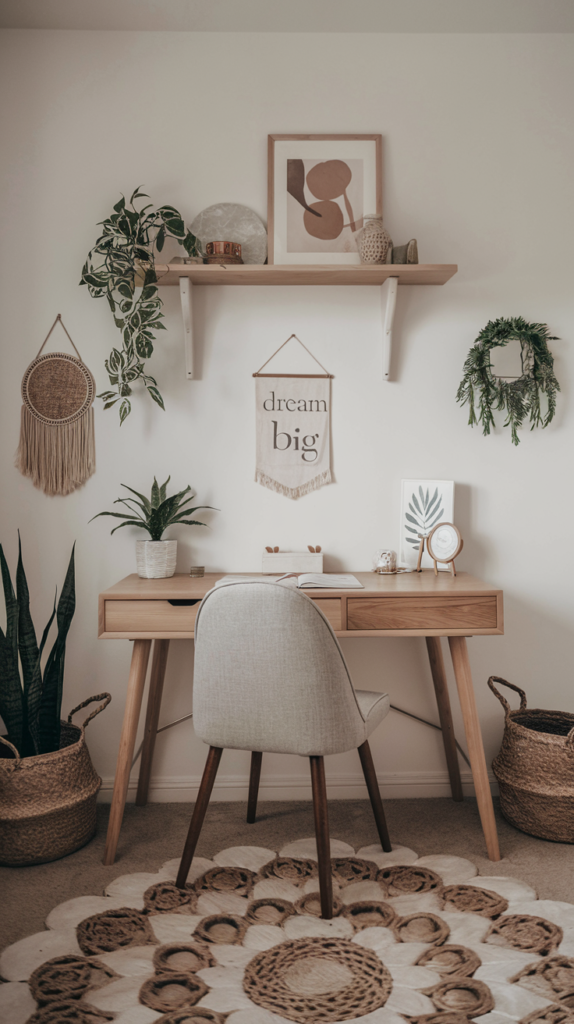
If you want to inject some style into your workspace, a statement chair is a great way to do it. Whether it’s a leather office chair, a modern ergonomic design, or a colorful armchair, choosing the right chair can add personality to your office while providing comfort. I made the mistake of choosing style over comfort once, but now I make sure to pick chairs that are both visually appealing and practical.
24. Maintain a Clear Desk Policy

A clear desk policy is crucial for keeping distractions at bay. At the end of each day, I take a few minutes to tidy up my desk and only leave the essentials for the next workday. This helps me start each day with a clean slate and a clear mind.
25. Use Wall Decals or Stickers for Easy Updates
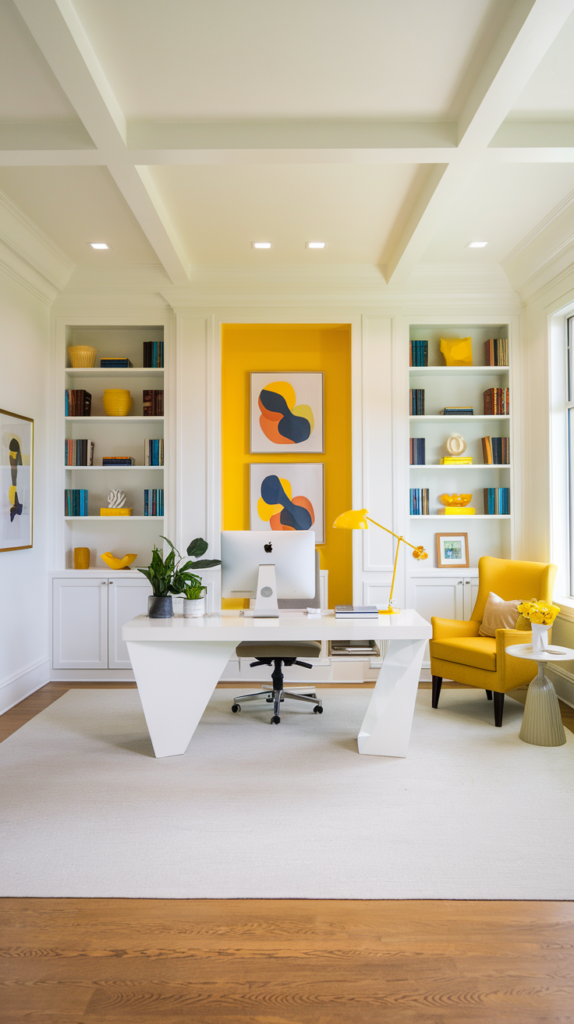
For those who like to change things up often, wall decals or stickers offer a low-commitment way to refresh your office decor. They can add fun patterns, quotes, or even a pop of color to your workspace without the need for expensive renovations.
26. Add a Cozy Throw Blanket
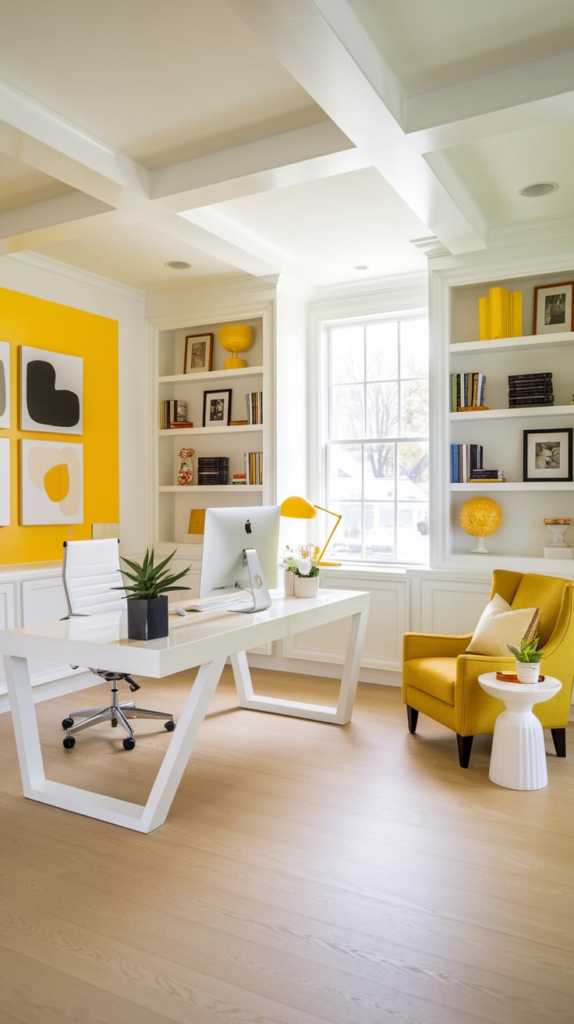
When the workday gets long, a cozy throw blanket is like a warm hug. Incorporate soft textiles to make your office feel inviting and comfortable. I like to keep a soft, plush throw draped across my chair for those chilly mornings when I need a little extra warmth.
27. Create a Whiteboard Wall
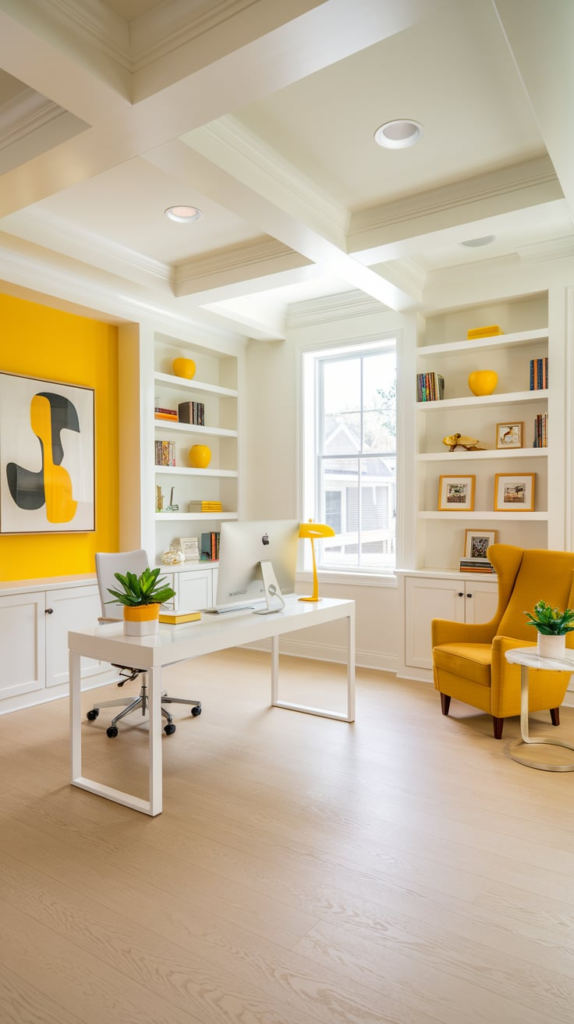
If you love brainstorming or tracking progress visually, why not turn an entire wall into a whiteboard wall? This gives you plenty of room for ideas, sketches, or notes, helping you stay organized and creative. I’ve been using whiteboard paint for years and find it incredibly useful for mind mapping and jotting down quick ideas.
28. Keep It Clutter-Free with Digital Tools
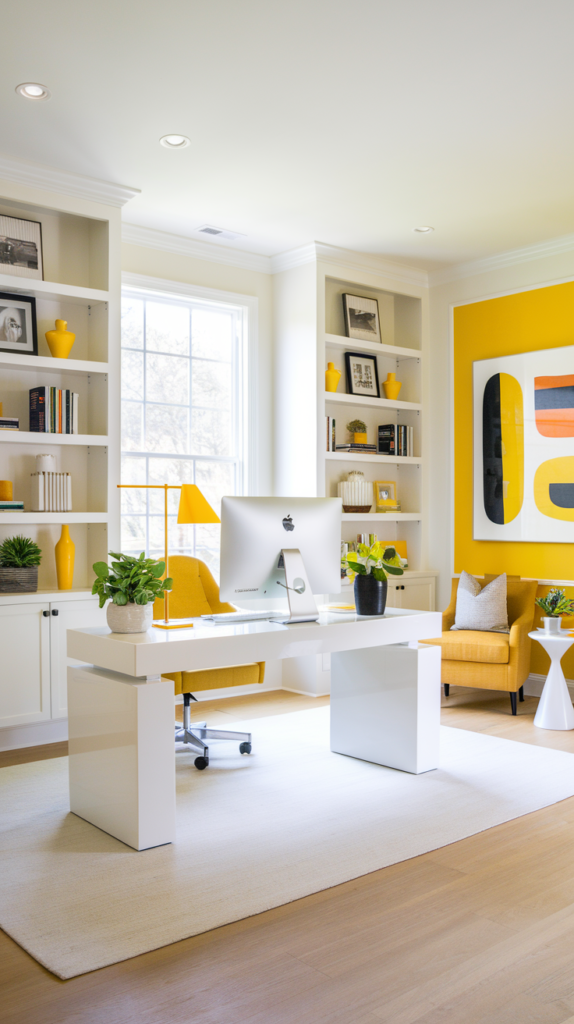
Finally, use digital tools to minimize clutter in your physical workspace. Apps like Evernote, Trello, or Google Drive can help you stay organized without piling up papers. I use Trello to manage my tasks, which means I rarely need to keep physical notes or files on my desk.
Conclusion
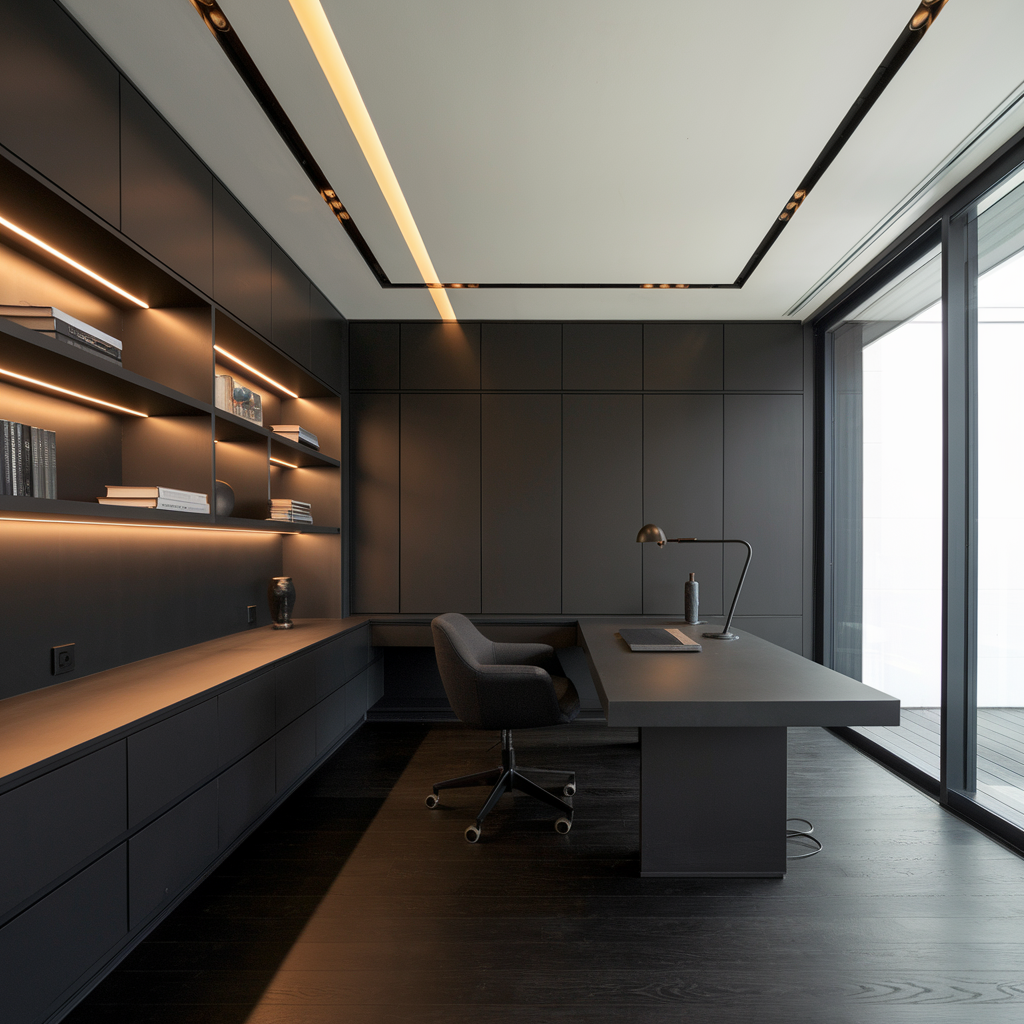
Designing the perfect home office is about finding the right balance between style, function, and comfort.
Whether you’re working with a spacious room or a cozy corner, the key is to make the space reflect your personality while keeping you focused.
Incorporate some (or all) of these tips into your space, and soon you’ll have a workspace that’s both productive and inspiring.
